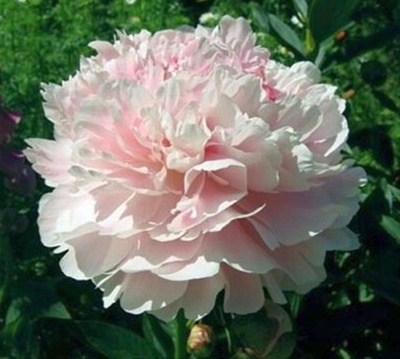 Peonies...............
Peonies...............Paeonia (peony or paeony) is a genus of flowering plants, the only genus in the family Paeoniaceae. They are native to Asia, Southern Europe and Western North America. Boundaries between species are not clear and estimates of the number of species range from 25 to 40.
Most are herbaceous perennial plants 0.5–1.5 metres (1.6–4.9 ft) tall, but some resemble trees 1.5–3 metres (4.9–9.8 ft) tall. They have compound, deeply lobed leaves and large, often fragrant, flowers, ranging from red to white or yellow, in late spring and early summer.
Kingdom: Plantae
(unranked): Angiosperms
(unranked): Eudicots
(unranked): Core eudicots
Order: Saxifragales
Family: Paeoniaceae
Genus: Paeonia
The peony is named after Paeon (also spelled Paean), a student of Asclepius, the Greek god of medicine and healing. Asclepius became jealous of his pupil; Zeus saved Paeon from the wrath of Asclepius by turning him into the peony flower.
The family name "Paeoniaceae" was first used by Friedrich K.L. Rudolphi in 1830, following a suggestion by Friedrich Gottlieb Bartling that same year. The family had been given other names a few years earlier. The composition of the family has varied, but it has always consisted of Paeonia and one or more genera that are now placed in Ranunculales. It has been widely believed that Paeonia is closest to Glaucidium, and this idea has been followed in some recent works. Molecular phylogenetic studies, however, have demonstrated conclusively that Glaucidium belongs in Ranunculaceae, but that Paeonia belongs in the unrelated order Saxifragales.
Classification
Peonies can be classified by both plant growth habit and flower type. Plant growth types are Herbaceous (nonwoody), Tree (shrub), and Itoh (or "Intersectional"), which is intermediate between herbaceous and tree forms. In winter herbaceous peonies die back to their underground parts, whereas tree peonies lose their leaves but retain viable woody stems above ground. The Itoh hybrids are intermediate between herbaceous and tree forms. They are named after Toichi Itoh, who first produced a successful intersectional hybrid in 1948.
The following sequence of flower types becomes more complex in its arrangement of petals. The flower types include Single (e.g., Athena, Scarlet O’Hara), Japanese (Nippon Beauty, Madame Butterfly), Anemone, Semi-Double (Paula Fay, Buckeye Belle), Double (Gardenia, Paul M. Wild) and Bomb-Double (Raspberry Sundae, Mons Jules Elie).

No comments:
Post a Comment